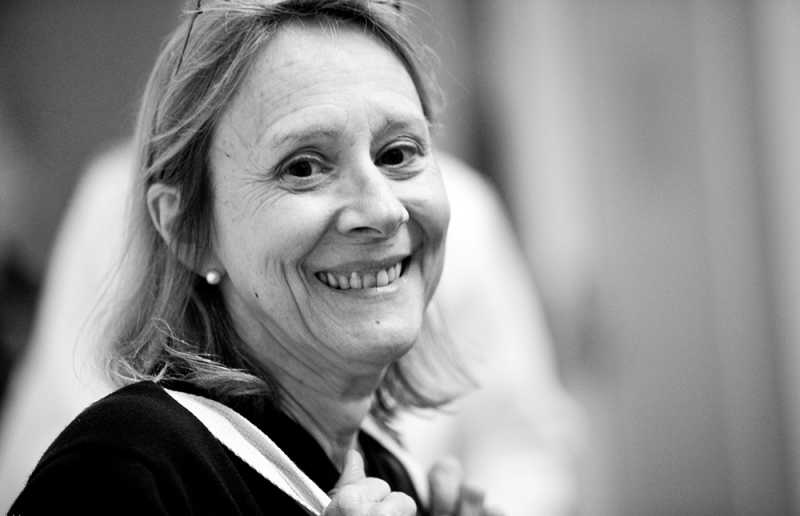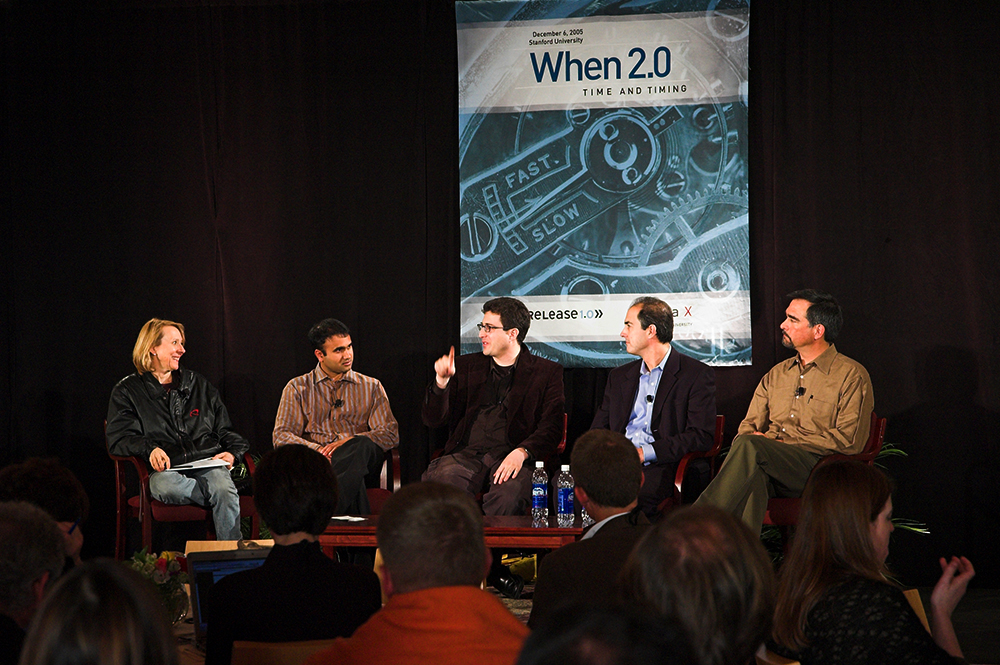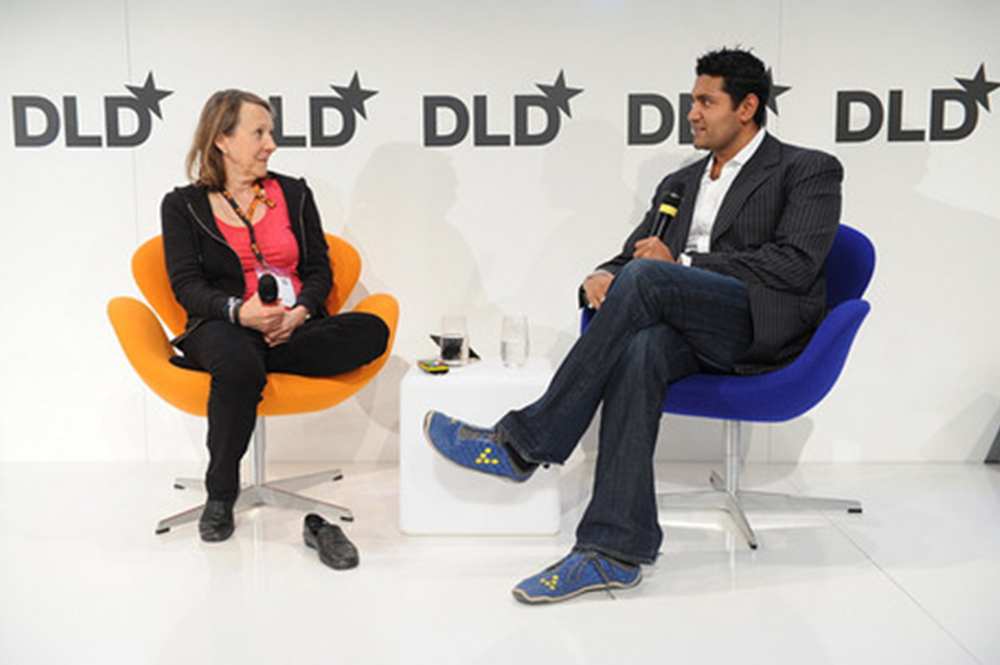Interview: Esther Dyson

In this edition of Lived It, we sit down with Esther Dyson. Esther is the chairman of EDventure Holdings and founder of HICCup, the Health Initiative Coordinating Council, a nonprofit she founded to create a framework to improve the health of communities, and in time, create a sustainable business model for health (not care).
Many angel investors will say to invest in what you know, and Esther uses her multi-industry expertise invest in and nurture models, companies and products that she believes need to exist in the world. She sits on the board of more than a dozen startups, and has seen her portfolio grow to more than 150 investments.
Esther is an angel investor, but she’s had more adventures than many could ever dream about. We sit down with Esther to discuss her impressive and varied resume, her recent investments in the aerospace, human capital, and health space, and her journey from investing to founding a nonprofit organization and seeking investment herself.
Meet Esther
Years as an angel investor: 20+ years Number of investments: ~150
First Investments
Aside from her own company EDventure, which Esther bought from her boss Ben Rosen back in 1983, Esther’s first investment was a result of a side newsletter she wrote in the 90s as a sidelight to her primary newsletter, Release 1.0. Rel-EAST focused on the emerging tech markets of Eastern Europe, where she had been traveling since 1989. Its purpose was her own education – plus a general encouragement to vendors and investors to enter these promising markets. Esther was asked by a friend if she would invest $1 million for him in Eastern Europe. As a journalist, Esther automatically started to say no to avoid conflicts of interest, but she realized that she could learn as much – and perhaps earn even more – running a fund rather than writing a newsletter.
So “I asked ‘hooow much?!?!’ “ she recalls. And then she said yes. She folded Rel-EAST, added some funds of her own, and started EDventure Ventures (while continuing Release 1.0 in the US and her annual PC Forum conference). As is typical of investing, not all of the companies she invested in through this first fund paid off. One “totally failed,” two were merged into a new company that foundered, and two (CV Online and Scala ECE) did well for the investment group. “It was your typical fund,” Esther said of the experience.

Among the companies she knew was ParaGraph International Inc., founded by Stepan Pachikov, who went on to found Evernote. ParaGraph developed the handwriting recognition code used in the Apple Newton. Esther introduced the company to Steve Jobs and Bill Gates. As a thank-you for her help and support, the entrepreneur surprised Esther by giving her one per cent of the company, which sold two years later for $50 million.
“I had an infinite rate of return,” she said with a smile.
“In short, I discovered that investing could be just as much fun as reporting but more lucrative. I didn’t sit down and say, ‘Now, I’m going to be an angel investor.’ ach time I did it, it was because there was something I wanted to see happen. I never decided to become an angel investor and I never allocated money. It all just happened.”
A $1 million windfall in the form of a book advance, plusthe sale of ParaGraph, gave Esther the initial capital she needed to begin investing seriously. While she credits it as “pure luck,” her small investments in funds from venture capital firm Kleiner Perkins Caufield & Byers reaped major rewards from, among others, its early stake in Google. On the Google investment alone, Esther’s return was about $2 million.
Other Investments
Esther now sits on the boards of six companies: 23andMe, Luxoft,Meetup, Voxiva, XCOR Aerospace, and Yandex. Her nonprofits include the Sunlight Foundation, Long Now Foundation, WEF Global Agenda Council on Fostering Entrepreneurship, and the Personal Genome Project.

Esther is quite active in her roles as an investor and board member: “I do everything from editing press releases to helping them run events to people problems. I am also, unfortunately, very good at regime change – but without bruising egos too much. When you’re a startup, you need help with everything: hiring people, getting interviews, and getting follow-on investments. Later on, it’s more just corporate strategy and governance issues.”

Motivation
When asked why she was drawn to angel investment, Esther tells us that she invests to help turn new ideas into products or services. There is only so much that one can do in a lifetime, only so much time in a day — if there are things that you want to see happen in the world, angel investing is a means of supporting projects you believe in.
In her words, “the reason to invest is not to be an investor, but because you think, ‘This is a good idea and I can help make it happen."
Deal Flow
Esther never consciously decided to be an angel investor. She continued to come across unique projects or startups that caught her interest. “I never decided to do it,” she said. “I did each thing with thought that, ‘Oh, this is really cool. I happen to have some cash. I’ll do it.’” Esther said she still approaches her investments with the same attitude, though entrepreneurs certainly need to know how to pitch themselves and their businesses properly in order to catch her interest. “I like things that make good use of business models,” she said.

Who do you go to when you need advice on your investments?
“It depends. I’m very much of a ‘loose connector’ rather than a single-person-for-everything, so it will depend what area it is. I have some close friends independent of business, but I don’t have a partner.”
Investing in health is different from investing in healthcare companies, and Esther has invested in both. As she points out, virtually no one is yet investing in health. This is her new challenge.
Thesis
Esther typically invests about $25,000 to $50,000 per investment: “It’s a chunk that makes a difference in an angel investment.” The amount she invests in startups varies based on a variety of factors; she says angel investors who are starting out also need to consider the amounts they want to invest in order to balance the need for a larger portfolio, and the financial needs of the startup.
“If you have only $100,000 in total, it’s a challenge because $5,000 doesn’t go very far [in a startup], and [entrepreneurs] really don’t want to have 70 different angels; $25,000 to $50,000 seems to be a standard amount. For some people, it’s $100,000 or $200,000, but I’m not quite at that level.”
Esther’s focus now is HICCup and its Way to Wellville project. The basic idea is to help five small communities to create health as a way of avoiding the costs (both human and financial) that come with disease and the need for health *care.* d HICCup, which operates like a small consulting firm/accelerator, is working in five Way to Wellville communities selected from 42 communities of under 100,000 people who applied in 2014. The goal is to produce measurable results in reduced costs, better health results (reduced obesity/diabetes) and higher social measures such as high school graduation rates. In essence, Esther has shifted her focus from angel to entrepreneur.
HICCup is currently funded by Esther’s shares in Facebook.
“Right now Mark Zuckerberg is funding it, but he doesn’t know,” she jokes.
Esther knows her shares are a finite resource, and is looking for direct investment in HICCup as well as grants and pay-for-success investments into the communities’ initiatives. Our mantra is, “Don’t rent your health. Invest in it!”

”Our mantra is, “Don’t rent your health. Invest in it!”
Asking for money for Wellville is difficult, Esther said, because she does not identify as a salesperson.
“That’s why we hired our Chief Investment Officer, who is much better at that and is making me do things I don’t feel comfortable with, which is great. In my angel investing, I invest only my own money. I don’t want to take responsibility for other people’s investments into companies I don’t control. But with HICCup, even though we have a CEO, yes, I am taking responsibility for the use of other people’s money.”
Investing in health is different from investing in healthcare companies, and Esther has invested in both. As she points out, virtually no one is yet investing in health. This is her new challenge.
“What I’m doing with HICCup is trying to figure out how can you invest in health as an asset rather than renting it as something that you have no equity in,” she said. “The business of health is changing because of the Affordable Care Act in the United States, and also because we have better data that allows us to measure the impact of investments in health vis a vis what was predicted without those investments. But in general, ‘health’ spending right now is focused on inputs and activity rather than outcomes, just like most care spending.”
Ultimately, says Esther, “HICCup itself is a nonprofit, for which we are seeking donations. But our mission is to turn investing in health into a long-term, profitable market.”

For aspiring angel investors:
“Don’t try to be something, try to do something, and that will determine what you are. Focus on your goal, not on your role. Don’t worry too much about what other people say, do, or have done. You can spend your whole life worrying about how other people would do things or how people will think about you. I’ve been extremely lucky in so many ways, but I’ve also always done what I wanted to do and enjoyed it. I try to make money doing what I do, but I don’t do anything I wouldn’t do for free. That’s a luxury. Not everybody can do that, but that’s how I decide how to spend my time. I ask myself, ‘Would I do this anyway?’ Those projects are the most important. In the end, you should think long-term, but you should enjoy what you’re doing.”
In her years of investing, Esther has made her fair share of mistakes. “The losses from the things that don’t work out are the prices of the education you can get from your mistakes if you are willing to learn,” she says. “You just get a better a sense of not being lured or swayed by flashy promises,” she said. “And certainly do not invest in a company because, ‘Oh, these three famous guys have put money in it so it must be a good deal.’”
Esther recommends making significant investments in companies you want to see succeed, but with the understanding that they could flop and you could lose your money. If that happens, the key is to remember why you decided to invest and what you were trying to accomplish.
“Fundamentally, when you’re doing angel investments, the nine failures are the cost of the one success. If you do series A investing, the companies are less likely to be total disasters, but you also get less upside. So the mathematical equations are the same, but the constants are different. In angel investing, you have to feel comfortable with losing your money nine out of 10 times as the cost of that one thing that might pay off,” she said.
“The great thing about angel investing is it’s your own money. Nobody’s going to complain that you invested their money in something stupid.”
Esther said that her own business, where she worked full-time for more than 25 years, made her less money than some other investments where she spent 10 minutes making a decision and signing documents. “You can’t expect that you will always get a just reward…or that you deserve your luck . You have to work hard to be lucky, but you have to appreciate that you got lucky.”

“Don’t try to be something, try to do something, and that will determine what you are. Focus on your goal, not on your role.”
For entrepreneurs trying to get in touch:
Esther rarely invests in anything that originates from a cold call or email. But in any case, Esther points out, there are many common pitfalls entrepreneurs make when they reach out to investors, and she gave us some pointers.
Some of the worst (and most obvious) mistakes some people make include using a form letter that says, “Dear friend,” or something equally generic. Another equally jarring faux pas is asking for an introduction to another potential investor if your project gets a pass.
The most important thing is to put yourself into the mindset of the person you’re addressing
“People who write to me, by and large…I’m sure they’re well-meaning and they’re trying hard, but there is this lower limit of common sense, and it’s unfair. Working in emerging markets has taught me a lot, including what it’s like to have nobody teach you how to do stuff. But email subject lines that say, ‘Hi,’ or that say, ‘From Bob Jones’ are a terrible idea. I can see the ‘From’ line. I know who it is from.”
Another of her peeves is some entrepreneurs’ obsession with secrecy: “The reality is it’s usually much harder to sell your idea than to keep it secret.
“In general,” she says, “I try to be nice, and sometimes I give them advice, and sometimes I just say, ‘I’m sorry. I’m busy with my own startup.’ ’ But then every once in a while, I’ll run into someone who says, ‘Ten years ago, you answered my email, and that was so nice.’ And that makes it all worth it!”
Subscribe to our Newsletter
Get investment education, interviews with angels and VCs, and exclusive event access.